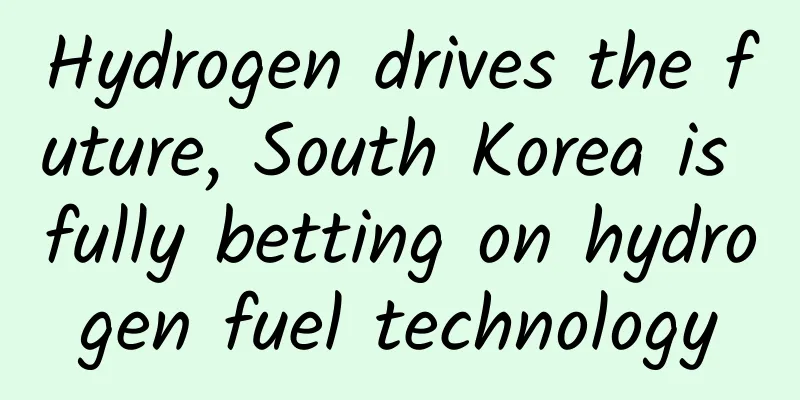Do you prefer strong or weak cooling when taking the subway?

|
Against the backdrop of rapid development of modern science and technology, my country's subway station construction has embarked on a new journey and has become the main means of convenient travel for modern urban residents. With the beginning of summer this year, high temperatures have continued to occur around the world, greatly reducing people's travel comfort. Image source network Taking the subway is a breath of fresh air, bringing passengers a brief sense of coolness and comfort. This is all thanks to the ventilation and air-conditioning system in the station. We all take the subway every day, and some people even spend several hours commuting. So, do you know the "little secrets" of the following subway stations? Image source: Photo Network 01 The secret of temperature control in subway stations In order to provide passengers with a relatively comfortable waiting environment and avoid energy waste, designers cleverly adopted transitional temperature control techniques. When passengers enter the station hall from the higher temperature outdoors, if the temperature difference between indoor and outdoor is too large, people will feel extremely uncomfortable. At the same time, people stay in the station hall for a short time. After entering the station quickly, they go directly to the platform to wait for the train. Therefore, the temperature of the station hall is controlled at 29℃. It is this small 2~3℃ temperature difference between indoor and outdoor that ensures that people do not feel that the station hall is too hot or too cold during their daily travels. Image source: Photo Network Later, passengers enter the platform from the station hall to wait for the train, and their bodies gradually adapt to the surrounding environment. In order to further provide passengers with a relatively comfortable experience, the temperature of the platform is lowered by 1~2℃ to 27~28℃. Although the temperature between the station hall and the platform has changed, no obvious difference can be felt. Finally, the passengers enter the carriage. As there are many people in the carriage and the stay time is long, the designers lower the temperature inside the carriage by 1~2℃ again. Image source: Photo Network With the development of subways, in order to further provide differentiated experiences for different passengers, the temperature of the front and rear carriages of the trains is set differently, and passengers can choose by themselves. This is the little secret of subway travel that we cannot feel, but can feel. This little secret is inseparable from the unsung hero in the subway station - the ventilation and air-conditioning system. 02 Ventilation and air conditioning system - the "giant lung" of the subway The subway ventilation and air-conditioning system is mainly divided into two types: ventilation system and air-conditioning system . Its main goal is to ensure that the air environment quality, temperature and humidity, airflow organization, airflow velocity and pressure changes, and noise inside the subway can meet the physiological and psychological requirements of personnel, while meeting the needs of normal operation of equipment. Why is it called a “giant lung”? The ventilation and air conditioning system is one of the systems with the most pipes and the largest area in the subway station equipment system. According to the different places of use and standards, it can be divided into station ventilation and air conditioning system and section tunnel ventilation system. The station ventilation and air conditioning system is also the source of comfort in our subway station, and it also provides necessary ventilation and air conditioning for the station public area, equipment management room, etc. Figure 1 Composition of subway ventilation and air conditioning system In short, the subway station ventilation and air-conditioning system has huge functions. It not only provides passengers with a comfortable transitional environment when traveling between the ground and the train, but also ensures the environment required for the normal operation of the equipment. In addition, when a fire occurs, reasonable airflow organization can be carried out, smoke can be exhausted in time, and passengers can be induced to evacuate. Some external factors can affect the subway ventilation system. First, because it is deep underground, it is less affected by external weather changes. At the same time, due to the thermal inertia of the soil, temperature changes are delayed. Secondly, there are significant internal disturbance sources (heat, moisture and dust). Trains, various equipment and passengers themselves will release a lot of heat, which will cause the temperature of stations and tunnels to rise. Finally, the high-speed running of the train will cause piston wind, which has a great impact on the airflow organization in the subway. It is not only the main driving force for ventilation in the tunnel, but also has a great impact on the station air conditioning. By considering the influence of various external and internal factors such as different regions, climate conditions, and airflow inside the station, the station ventilation and air conditioning system operates reasonably under different matching conditions, thereby bringing a cool feeling to the passengers in the station. 03 Energy saving potential of ventilation and air conditioning systems With the rapid development of urban rail transit, the complexity of ventilation and air-conditioning system settings has increased, and energy-saving requirements have continued to increase. People are also paying more attention to the green and energy-saving aspects of existing subway ventilation and air-conditioning. While the ventilation and air-conditioning system provides a comfortable and safe environment for urban rail transit projects, its energy consumption level accounts for about 40% of the energy consumption of the entire subway station. The ventilation and air-conditioning system has great energy-saving potential. In traditional subway designs, ventilation and air-conditioning systems in stations are mostly designed based on the most unfavorable operating conditions. This makes it easy for the system to operate under partial load most of the time, resulting in the phenomenon of a big horse pulling a small cart. Now designers are designing more flexibly based on the different needs of operational scenarios, such as: Through the setting of adjustable platform doors, the dual goals of fresh air introduction and natural cooling can be achieved by making full use of natural cooling sources in the transition season; Optimize the air supply and exhaust system. Under appropriate working conditions, use the wind pressure generated by single supply or single exhaust to achieve air flow and reduce equipment operation energy consumption; The subway ventilation and air conditioning system is equipped with and continuously upgraded with an intelligent brain, namely an intelligent energy-saving control system. By integrating many aspects such as the environment, operation mode, renewable energy, and energy-saving and emission-reduction control strategies, and integrating energy conservation with actual operations, the subway ventilation and air-conditioning system is further improved in terms of efficiency and low consumption. Through innovation and optimization bit by bit, the system can meet the needs of the riding environment while greatly reducing the energy consumption of the system. Image source: Photo Network The subway ventilation and air-conditioning system is a system formed by multiple devices and systems. It is very complicated to manage and operate, but it has largely solved the current problem of thermal comfort for passengers in the station. On this basis, the ventilation and air-conditioning system is also continuously deepening its green and low-carbon field, focusing on optimizing the irrational factors of the current system, and striving to achieve all-round energy conservation and carbon reduction in the system! Let us witness with expectation that in the future the subway will gradually become a means of transportation that serves the public and truly realizes green and low-carbon travel. END author: 1. Li Ke, Vice President of the Rail Transit and Underground Space Institute of Beijing Municipal Engineering Design and Research Institute Co., Ltd., Professor-level Senior Engineer 2. Liu Chang, Designer, Rail Transit and Underground Space Institute, Beijing Municipal Engineering Design and Research Institute Co., Ltd. 3. Zhao Xinghai, Senior Engineer, Rail Transit and Underground Space Institute, Beijing Municipal Engineering Design and Research Institute Co., Ltd. |
<<: Interesting stories about scientific discovery: Levitating frog
>>: What exactly is "Rakshasa Sea City" about?
Recommend
Is lard residue healthy? Finally there is a reliable answer
Expert of this article: Zhang Zhaomin, Master of ...
5 years of 0 interest, behind the different price wars, what really dominates users is intelligence
The price war in the automotive industry will not...
Baidu promotion invalid clicks, how to avoid invalid clicks?
Friends who are engaged in Baidu bidding promotio...
How much does it cost to customize a logistics mini program in Anqing?
According to industry insiders, mini programs wil...
Why do unoccupied houses age so quickly?
I don’t know if you have ever seen those vacant o...
Want your new app to be popular before it goes online? This is how you can warm up the market!
In the film and television industry, we often hea...
No more "crashes", Tingyun App can help you increase your APP's user retention rate by 20%
Maybe no one cares, but "frustrating" t...
The latest practical course on making money with Douyin app, no basic knowledge, practical + theory, some people have already made 20,000+ a day
The latest practical course on making money with ...
Liu Minghao analyzes JD Finance's Zeus security defense platform
I am very happy to have the opportunity to share ...
User experience requires more than just methods, it also requires strategies
The rapid development of the Internet has created...
Let’s take a look at a healing story about Siri
What can Siri do? Ask about the weather, ask abou...
Android 13 new features and adaptation development guide
Part 01 Feature Updates 1.1 Application icons sup...
Want to use your phone for four or five years? There are two conditions that are best met. If you miss one, it will be very frustrating.
Condition 1: It is best to choose large memory + ...
OTT is struggling as a third party, but IPTV is taking a backseat
If television is a man, then analog television, c...
Awesome brands often have their own media attributes!
I have watched quite a few product launch confere...









